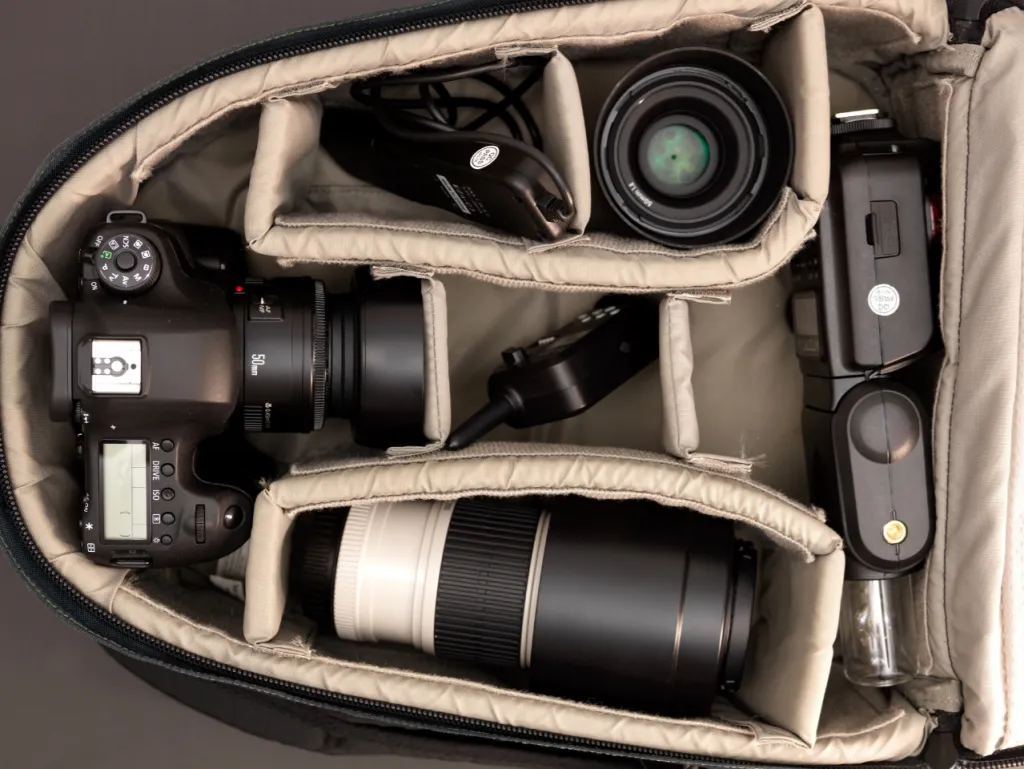Choosing the right camera storage solution is crucial for safeguarding photography equipment during travel. This guide examines various protective cases—from compact carry-ons to rugged hard-shell options—detailing key features, ideal use cases, and top product recommendations. Readers will learn how to select bags based on gear volume, airline regulations, weather resistance, and accessibility needs. Practical maintenance tips and FAQs address common concerns about durability and security. Whether shooting locally or abroad, photographers can optimize organization and damage prevention with informed case selections. The analysis draws on industry standards and real-world testing to help professionals and enthusiasts alike make confident purchasing decisions for their valuable equipment.
Introduction
Protecting your camera gear is as crucial as capturing great shots. According to a 2022 study by Claims Journal, professional photographers file equipment damage claims worth $1.2 billion annually, with 40% of incidents occurring during travel. The Transportation Security Administration (TSA) reports that cameras are among the top 5 most damaged items in checked luggage.
For traveling photographers, the right protective case isn't just convenient - it's essential insurance. Consumer Reports testing found that quality camera bags can reduce impact damage by up to 89% compared to regular backpacks. Whether you're a travel blogger or professional shooter, choosing between padded bags, hard cases, or carry-on solutions could mean the difference between pristine gear and costly repairs.
This guide will help you navigate the options, from compact carry cases to professional hard-shell solutions, with expert recommendations to match your shooting style and travel needs.
1. Types of Camera Bags and Cases
1.1 Camera and Travel Bag
A camera and travel bag is a hybrid solution that combines camera storage with everyday usability. These bags often feature:
Padded dividers for lenses and camera bodies.
Extra compartments for personal items like laptops, clothes, or snacks.
Comfortable straps for long-term wear.
Best for: Photographers who want a single bag for both gear and travel essentials.
1.2 Camera Carry Case
A camera carry case is a compact, lightweight option designed for quick access. Key features include:
Shoulder or belt attachment for mobility.
Minimalist design—fits a camera body and 1-2 lenses.
Quick-access zippers for fast shooting.
Best for: Street photographers and travelers who need portability.
1.3 Travel Case for Camera
A travel case for camera is built for extended trips with multiple gear pieces. Look for:
Weather-resistant materials (waterproof or water-repellent).
Customizable compartments for different equipment.
TSA-friendly locks for airport security.
Best for: Travel photographers who carry multiple lenses and accessories.

1.4 Camera Carry-On Luggage
A camera carry-on luggage meets airline size restrictions while protecting gear. Important aspects:
Fits overhead bins (typically under 22 x 14 x 9 inches).
Padded interiors to prevent shocks.
Wheels and handles for easy transport.
Best for: Frequent flyers who need secure, airline-approved storage.
1.5 Camera Luggage Case
A camera luggage case is a larger, wheeled option for heavy gear. Features include:
Hard or soft-shell construction.
Rolling wheels & telescopic handles for mobility.
High-capacity storage for multiple bodies and lenses.
Best for: Studio photographers or videographers with bulky setups.
1.6 Camera Hard Case
A camera hard case offers maximum protection in extreme conditions. Benefits:
Crushproof and waterproof (IP67-rated options available).
Custom foam inserts for snug gear fit.
Dustproof seals for outdoor adventures.
Best for: Adventure photographers, drone operators, and extreme travelers.
2. How to Choose the Right Camera Bag or Case
2.1 Consider Your Gear
How much equipment do you carry? A mirrorless shooter may need less space than a DSLR user with multiple lenses.
Do you need space for a tripod or drone? Some bags have external attachment points.
2.2 Think About Travel Needs
Airline restrictions: Check carry-on size limits (most airlines allow 22 x 14 x 9 inches).
Weather resistance: If shooting in rain or snow, opt for waterproof materials like Tarpaulin or Cordura nylon.
2.3 Comfort and Accessibility
Padded straps reduce shoulder strain.
Side-access zippers let you grab gear without removing the bag.
2.4 Security Features
Lockable zippers deter theft.
RFID-blocking pockets protect credit cards and passports.
3. Top Camera Bag and Case Recommendations

Best Camera and Travel Bag – Peak Design Travel Backpack 45L
Expands for extra storage, sleek design, and weatherproof.
Best Camera Carry Case – Lowepro Passport Sling III
Lightweight, fits a mirrorless camera + 2 lenses.
Best Travel Case for Camera – Think Tank Airport Essentials
Fits under airplane seats, TSA-compliant.
Best Camera Carry-On Luggage – *Pelican Air 1535 Carry-On*
Ultra-durable, crushproof, and airline-approved.
Best Camera Luggage Case – Manfrotto Pro Light Multiloader
Wheels smoothly, fits 2 cameras + 4-6 lenses.
Best Camera Hard Case – Nanuk 945 Hard Case
Waterproof, customizable foam, and drop-proof up to 10 feet.
4. Maintenance and Care Tips
Clean regularly: Wipe down with a damp cloth.
Check zippers and seams for wear.
Replace foam inserts if they lose cushioning.
FAQs About Camera Bags and Cases
Can I use a regular backpack as a camera bag?
While possible, dedicated camera bags offer better padding and organization.
Are hard cases necessary for air travel?
For checked luggage, yes—hard cases prevent crushing. For carry-ons, a padded backpack often suffices.
How do I know if a bag is airline-approved?
Check dimensions—most airlines allow 22 x 14 x 9 inches for carry-ons.
What’s the best material for a camera bag?
Waterproof nylon (e.g., Cordura) is durable, while polycarbonate is best for hard cases.
Conclusion
Choosing the right camera bag or travel case depends on your gear, travel style, and security needs. Whether you need a lightweight carry case or a heavy-duty hard shell, investing in proper protection ensures your equipment stays safe.
What’s your favorite camera bag? Share your experiences in the comments!

























































